Keeping chickens in Upstate NY in the winter is a struggle. Having a DIY heated chicken waterer makes it much easier.
Just like with chicken feeders, we’ve struggled with the best solution for keeping water available for our flock. Trying to keep water free of poop, wood chips, chickens themselves and all sorts of other things is hard enough without the biggest issue: freezing.
We have finally found a low maintenance solution that really works for us, again it involves a bucket. I will say up front though that it is inside a (non-insulated) shed, that has power.
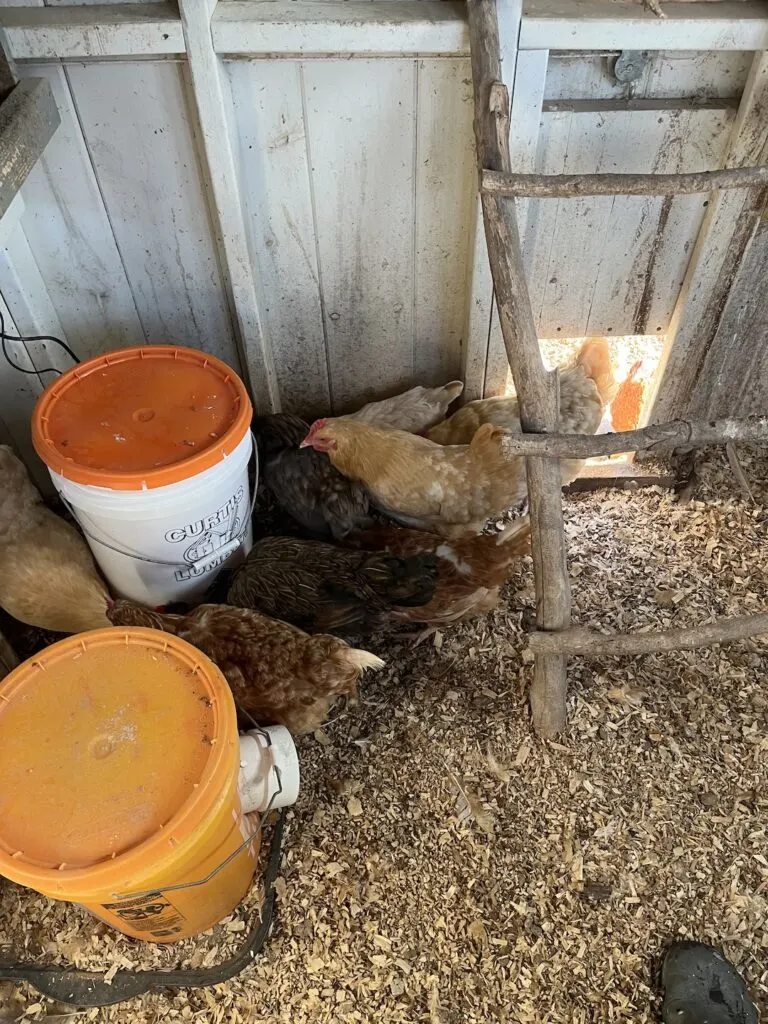
Materials Needed
- Aquarium heater
- Aquarium bubbler
- Thermo Cube
- 5 gallon bucket (again highly recommend you get a branded one, ideally different from your chicken feeder to give your chickens the illusion of consumer choice)
- Horizontal chicken watering nipples
Steps to Make a DIY Heated Chicken Waterer
As you can tell from the materials list the key is that you want to keep the water moving and also just warm enough to stop it from freezing. Honestly I think the bubbler does 90% of the work in this equation. The aquarium heater, bless it’s little mechnical heart, is trying but NY winters are no joke.
You start with drilling the correctly sized holes into the bucket along the sides for the horizontal chicken nipples. The horizontal ones means you can have the bucket sitting on it’s base and they catch some of the water that isn’t immediatly drunk. Some.
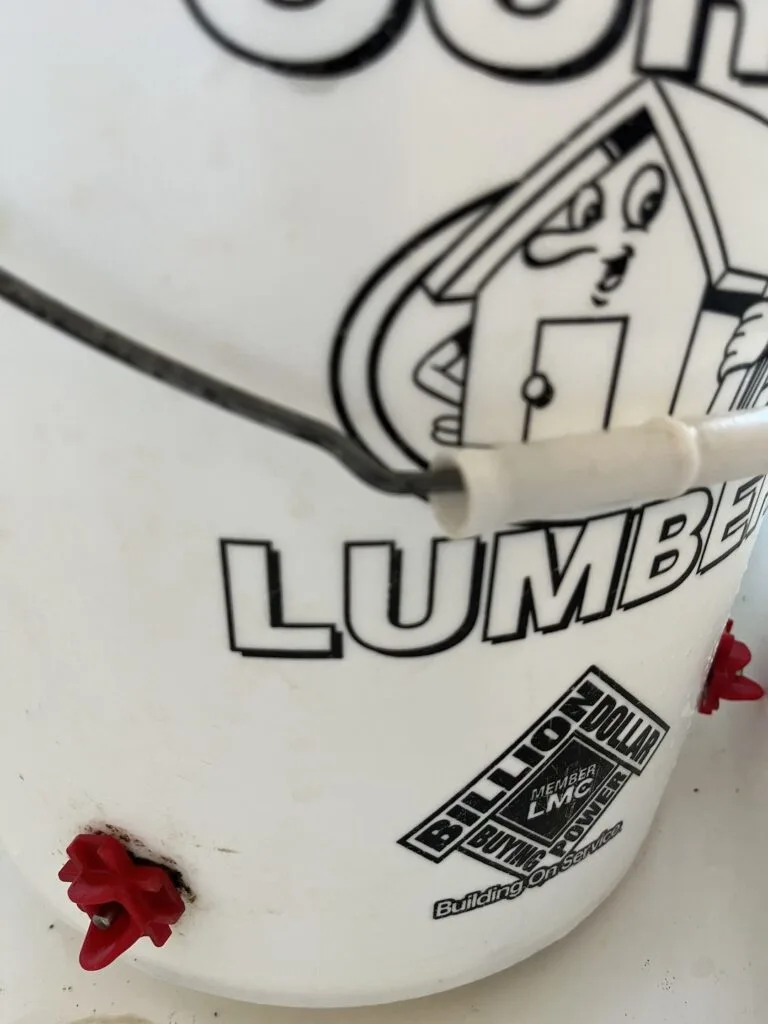
The goal with the placement of the nipples is to balance the height against two things. First, to make sure they are low enough to be reached by the chickens when you set your bucket on something. Second, high enough to leave enough water in the bottom to fully submerge the bubbler pump and heater at all times. Having a heater or even bubbler running without water is bad news bears.
I place two per bucket because of where my waterer sits. I could easily put three to give even more hens access at once.
Speaking of, now is a good time to mention that anything from my site that you build, you are doing so at your own risk. I am not a professional anything (except data wrangler) and do not certify any of my plans or diy solutions as safe for your situation.
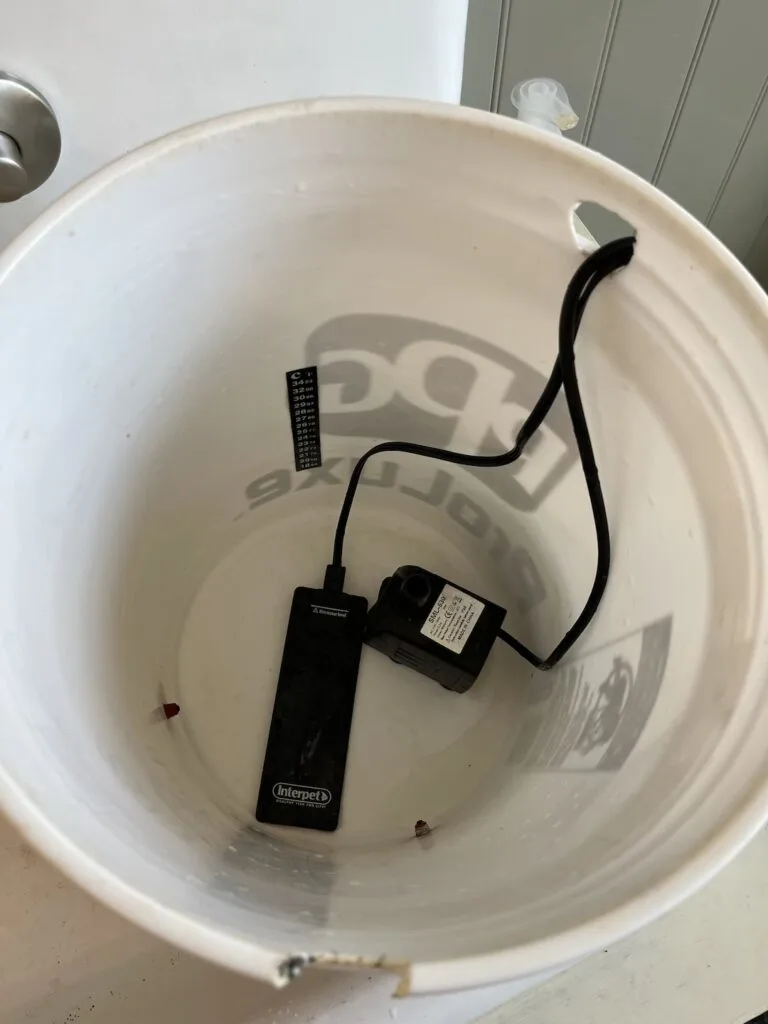
Both the bubbler and the heater should have suction cups to keep them stuck to the bottom of the bucket. Again you want to keep them below the water level at all times.
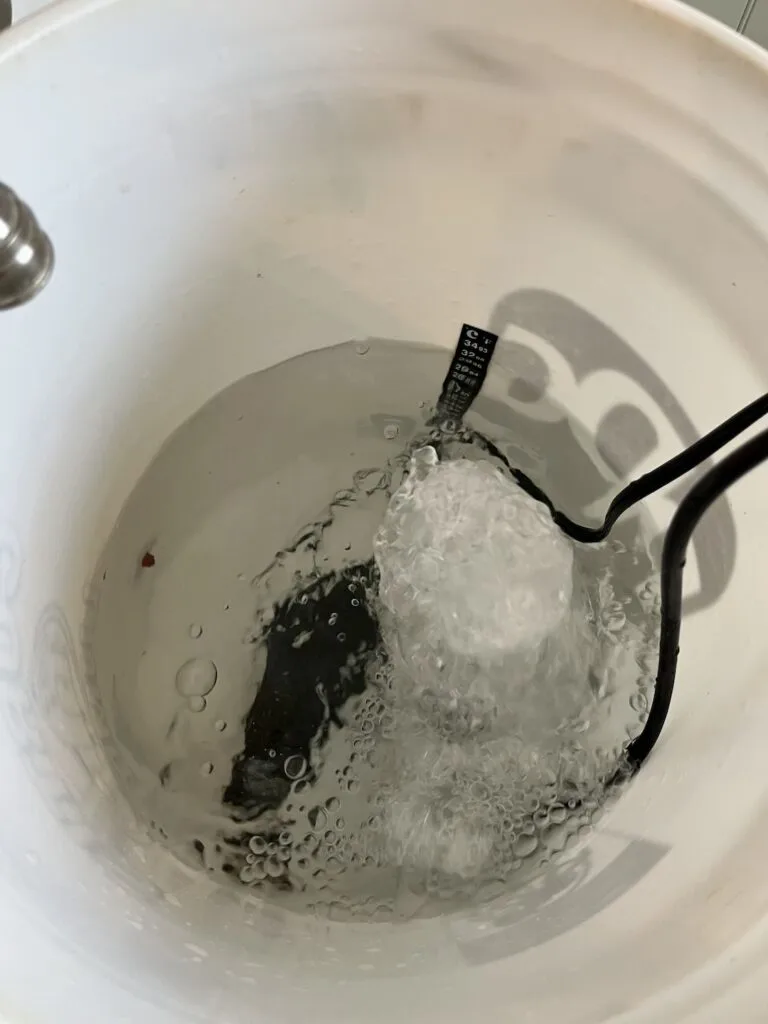
Here is a peak at the bubbler in action. It keeps the water moving making it much harder for it to freeze even if when it drops down so far below zero that I question why I still live in this part of the country.
Slap a lid on that and you have yourself a heated chicken waterer.
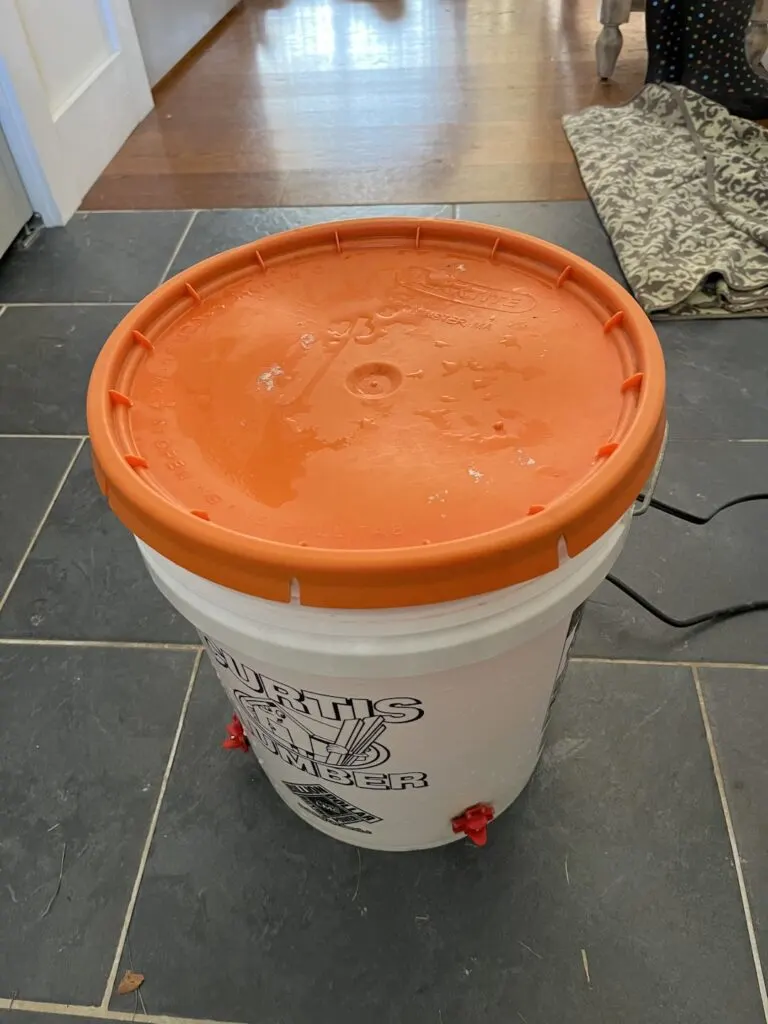
Where Does the Thermo Cube Come In?
Both the bubbler and the heater should then be plugged into the thermocube. The thermo cube is what stops that from running all day, every day. The thermo cube only kicks on power when the temperature falls below 35 degrees. That means if it warms up during the day enough then it will turn off and you won’t waste power running the bubbler and heater when they aren’t needed.

How Do You Maintain a DIY Heated Chicken Waterer?
Every spring when we emerge from our hibernation state, I pull the waterer inside and take out the heater and bubbler. I clean the bucket inside and out with hot water and apple cider vinegar. I clean and dry the bubbler and heater and store them for next season. The thermo cube is left plugged in year round in the shed.
In the fall I repeat the same in reverse, I clean out the waterer again the same way and add back in the bubbler and heater.
Drawbacks
Unlike the feeders, I don’t really have any clear drawbacks to this system. It can freeze if it gets extremely, extremely cold. If it does, I bring it inside to thaw, clean it out and bring it back out as soon as I can. My biggest annoyance is the chickens like to sit on the top because it gets warm and so it fills up with chicken poop. I haven’t come up with a good solution for that yet.
